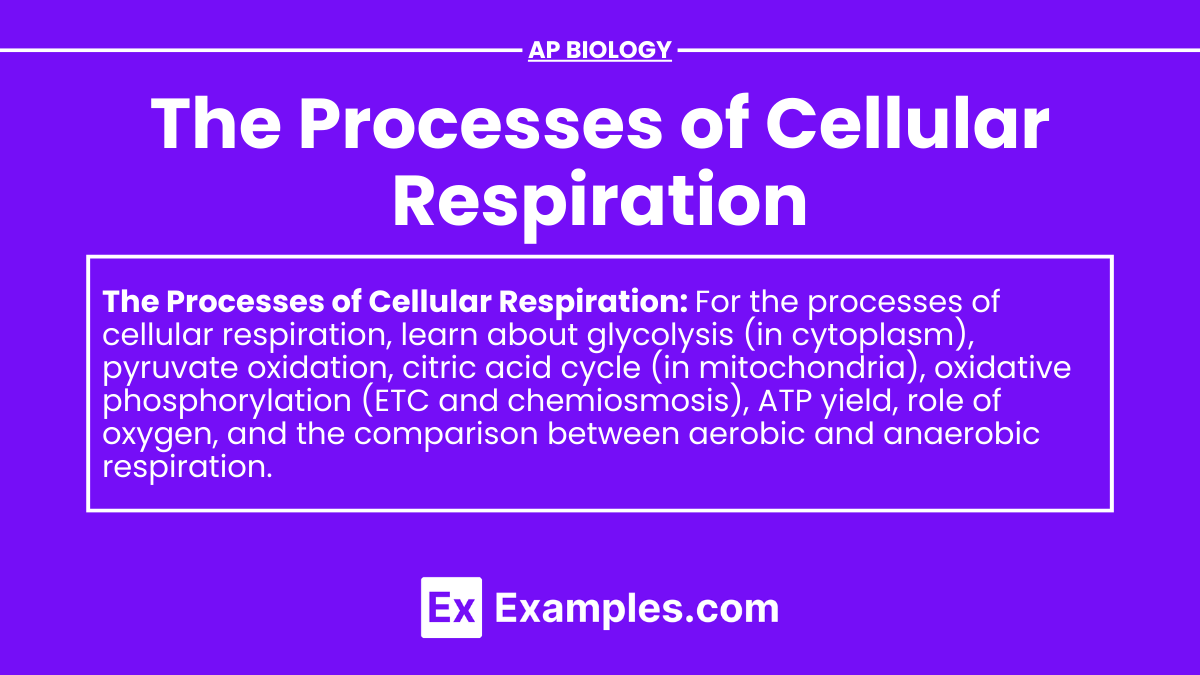In AP Biology, the study of cellular respiration is essential to understanding how cells convert chemical energy into ATP. This process involves the chemical properties of molecules like glucose and the role of cytochrome proteins in the electron transport chain. Oxygen acts as the final electron acceptor, driving the production of ATP. Unlike photosynthesis in the chloroplast, respiration occurs in the mitochondria, highlighting the energy conversion processes critical for cellular function.
Learning Objectives
Learning objectives for AP Biology on cellular respiration include understanding its connection to the cell theory, specifically how cells obtain and use energy. Students should explain the role of the cell membrane in respiration, particularly in the electron transport chain. They should also describe how the cell cycle and cell wall impact respiration in different organisms, and how energy production is vital for cell growth and division.
Overview of Cellular Respiration
Equation: C₆H₁₂O₆+6O₂→6CO₂+6H₂O+ Energy (ATP)
Location: Occurs in the cytoplasm and mitochondria of eukaryotic cells.
Stages of Cellular Respiration
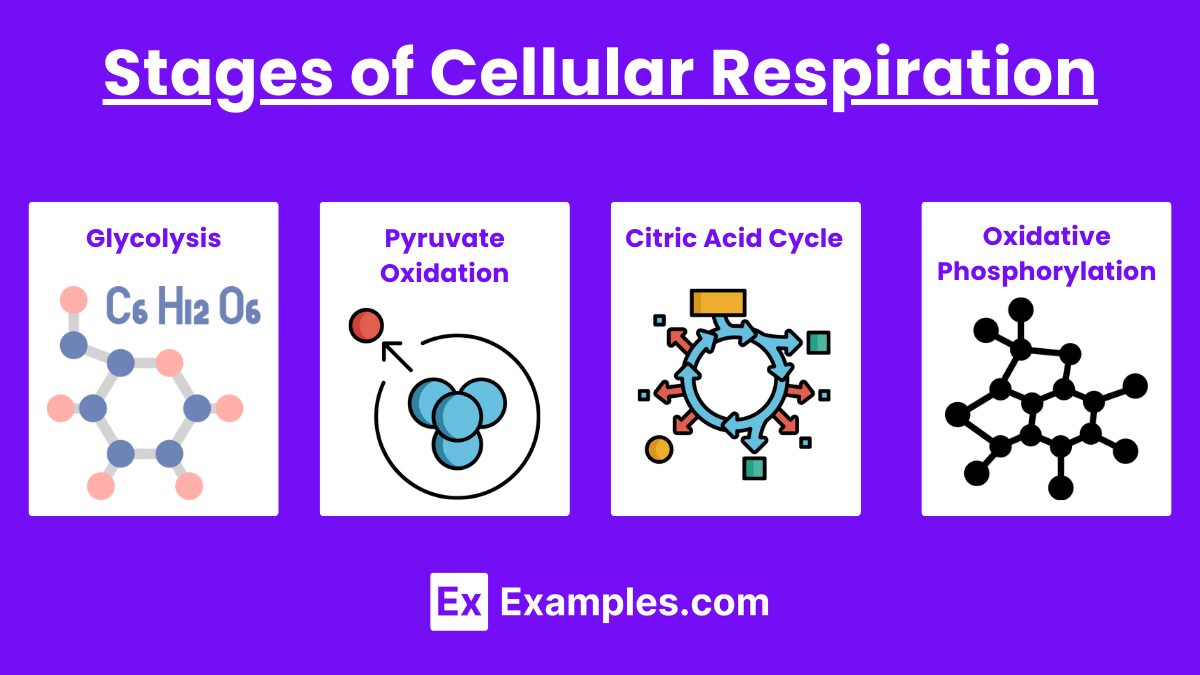
Glycolysis
Location: Cytoplasm
Function: Breaks down glucose into two molecules of pyruvate, producing a net gain of 2 ATP and 2 NADH.
Steps:
Energy Investment Phase: Uses 2 ATP to phosphorylate glucose, forming fructose-1,6-bisphosphate.
Cleavage Phase: Splits fructose-1,6-bisphosphate into two molecules of glyceraldehyde-3-phosphate (G3P).
Energy Payoff Phase: Converts G3P into pyruvate, producing 4 ATP and 2 NADH.
Pyruvate Oxidation
Location: Mitochondrial matrix
Function: Converts pyruvate into acetyl-CoA, producing NADH and releasing CO₂.
Steps:
Pyruvate is transported into the mitochondrion.
Pyruvate is decarboxylated, releasing CO₂.
The remaining two-carbon fragment is oxidized, forming NADH.
Coenzyme A (CoA) attaches to the acetyl group, forming acetyl-CoA.
Citric Acid Cycle (Krebs Cycle)
Location: Mitochondrial matrix
Function: Completes the breakdown of glucose by oxidizing acetyl-CoA to CO₂, generating ATP, NADH, and FADH2.
Steps:
Acetyl-CoA combines with oxaloacetate to form citrate.
Citrate undergoes a series of transformations, releasing 2 CO₂ molecules.
Produces 1 ATP (via substrate-level phosphorylation), 3 NADH, and 1 FADH2 per acetyl-CoA.
Oxidative Phosphorylation
Location: Inner mitochondrial membrane
Function: Uses NADH and FADH2 to generate ATP through the electron transport chain (ETC) and chemiosmosis.
Steps:
Electron Transport Chain: NADH and FADH2 donate electrons to the ETC, creating a proton gradient across the inner mitochondrial membrane.
Chemiosmosis: Protons flow back into the mitochondrial matrix through ATP synthase, driving the production of ATP from ADP and inorganic phosphate.
Total ATP Yield: Approximately 34 ATP molecules from one molecule of glucose.
Importance of Cellular Respiration
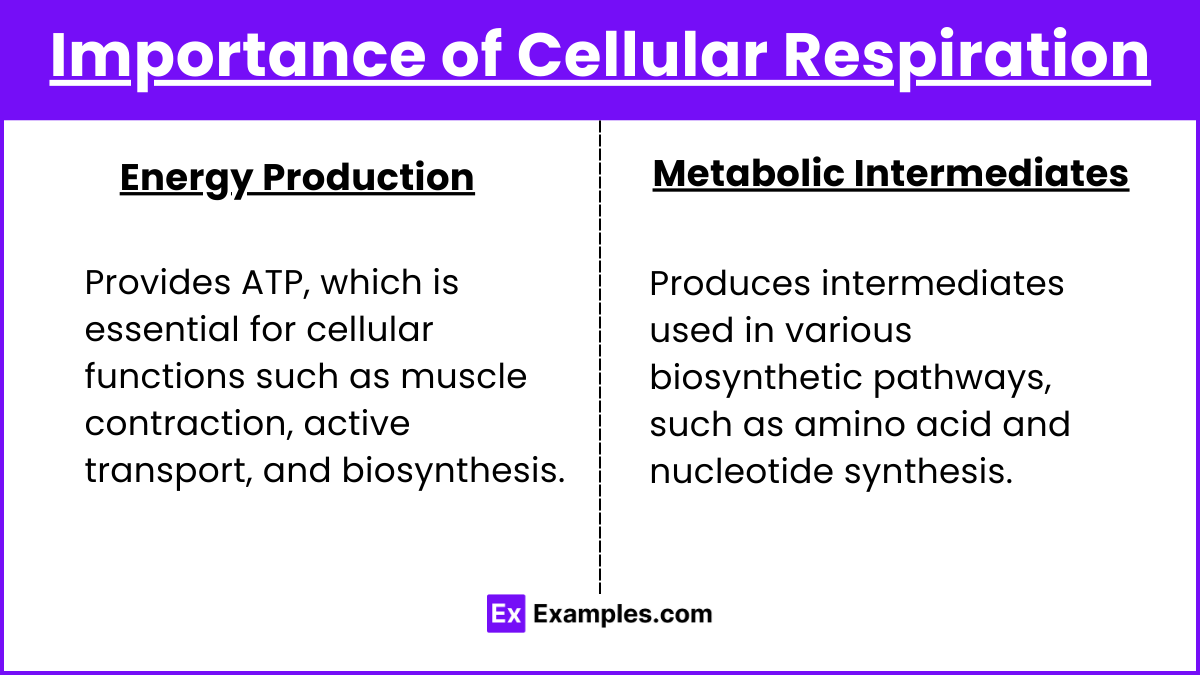
Energy Production
Provides ATP, which is essential for cellular functions such as muscle contraction, active transport, and biosynthesis.
Metabolic Intermediates
Produces intermediates used in various biosynthetic pathways, such as amino acid and nucleotide synthesis.
Types of Cellular Respiration
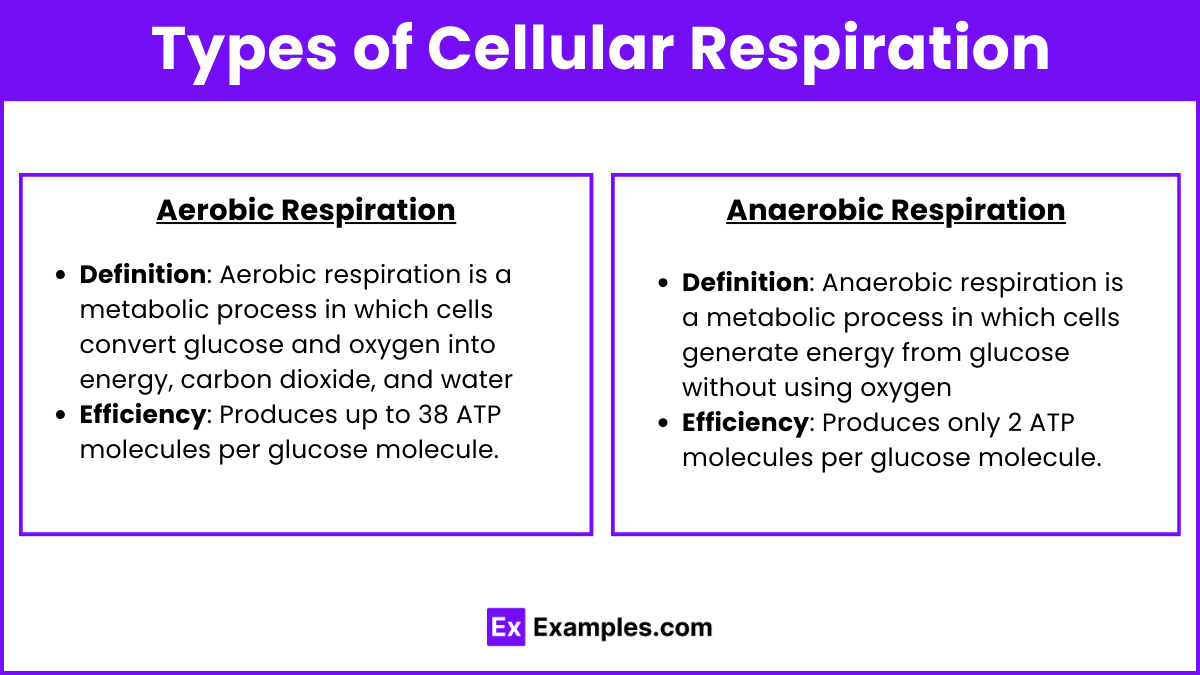
Aerobic Respiration
Definition: Requires oxygen.
Efficiency: Produces up to 38 ATP molecules per glucose molecule.
Anaerobic Respiration
Definition: Occurs in the absence of oxygen.
Types:
Lactic Acid Fermentation: Converts pyruvate to lactate, regenerating NAD⁺.
Alcohol Fermentation: Converts pyruvate to ethanol and CO₂, regenerating NAD⁺.
Efficiency: Produces only 2 ATP molecules per glucose molecule.
Regulation of Cellular Respiration
Allosteric Regulation
Key enzymes like phosphofructokinase (in glycolysis) are regulated by allosteric effectors such as ATP, AMP, and citrate.
Feedback Inhibition
High levels of ATP inhibit key enzymes, slowing down cellular respiration when energy is abundant.
Cellular Respiration in Different Organisms
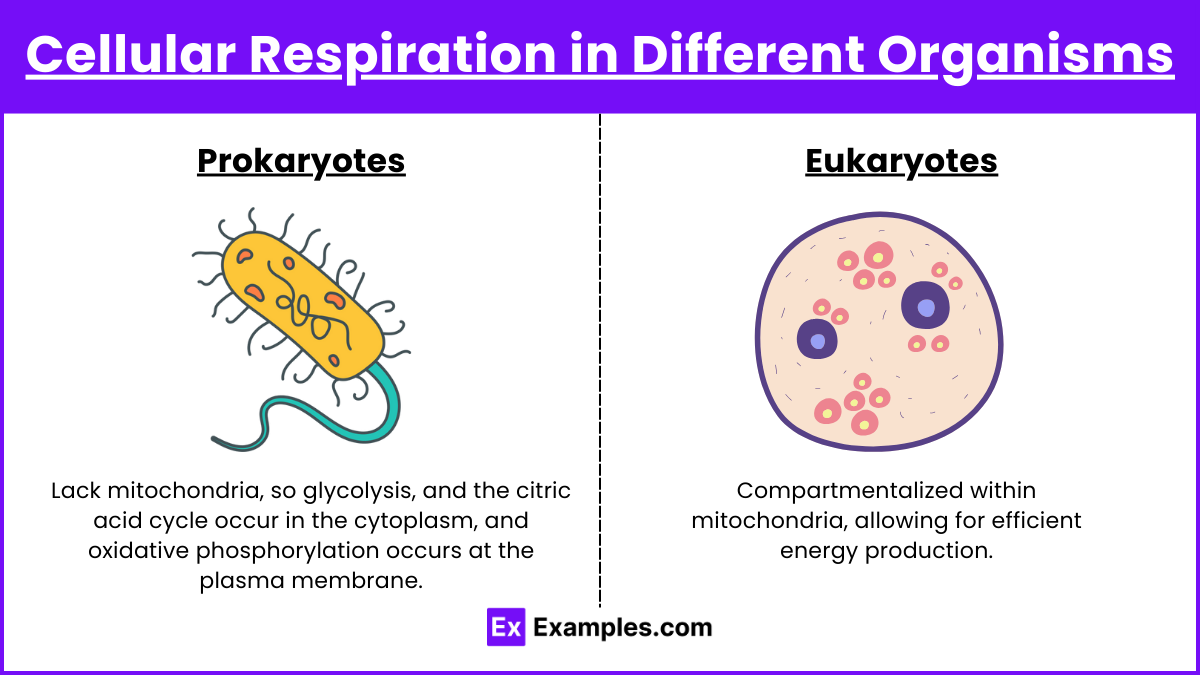
Prokaryotes
Lack mitochondria, so glycolysis, and the citric acid cycle occur in the cytoplasm, and oxidative phosphorylation occurs at the plasma membrane.
Eukaryotes
Compartmentalized within mitochondria, allowing for efficient energy production.
Experimentation and Observation
Respirometry: Measures oxygen consumption or CO₂ production to study cellular respiration rates.
Mitochondrial Isolation: Isolates mitochondria to study their function and structure in detail.

